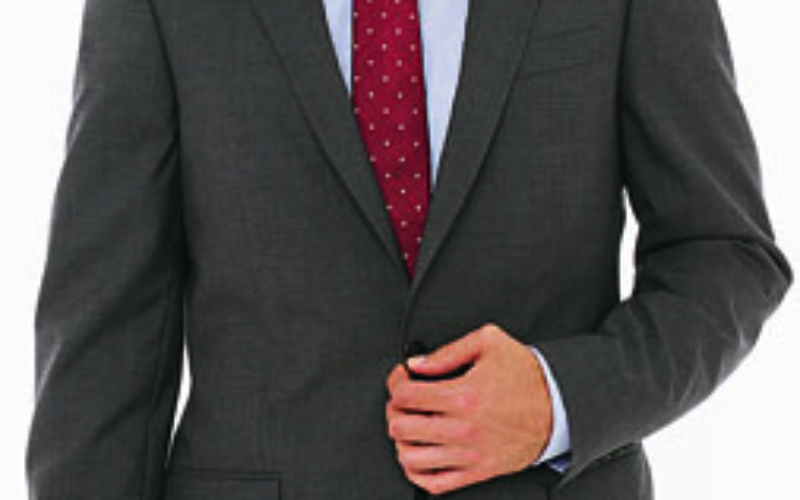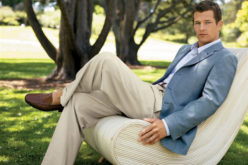Q. My husband thinks that he should show his individual style in interviews – which includes boot shoes rather than dress shoes and (now, with current needs) a bandanna for his covid PPE. He points to Blake Shelton’s boots, Mark Zuckerberg’s Nikes and T- shirts, Sundar Pichai’s zip jackets, and Jony Ive’s Wallabees as his “aspirations.” That’s all great, but he needs to get the job first, right?
A. I very much agree with you. Times have certainly changed for CEO’s, especially certain looks that have been worn at tech companies, but that first step of interviewing is still very traditional . . . even at those tech companies.
Here is my advice for your husband:
- Keep in mind that the “boss” has always had leeway that no one else has. Not his managers, not his entry-level employees, and certainly not hopeful interviewees.
- Interview dressing should be quite conservative. It should send the message that you are not the type to rock the boat, not the type to try to shock anyone or to call unnecessary attention to yourself. Does this sound as though I’m suggesting that you dress rather innocuously for an interview? Yes, I am.
- After you have passed the first interview and are ready for the second, usually with someone at a higher level, your clothes may express a bit more individuality. But proceed with caution. After you have the job, you may express more of your own personal style. (In interviews, careful grooming is crucial. A neat haircut and polished shoes are musts.)
I’ve always insisted that the key indicators of a man who really knows how to dress with style and taste are his shoes, his watch, and his tie. Shoes may not seem to have as immediate an impact as the eye-level tie, and the watch, but they really are important. People (and especially women) make judgments based on a man’s shoes. Consider two men wearing the same $800 suit. One wears an inexpensive pair of black low-boots; the other wears Brooks Brothers black cap-toe oxfords. They project two vastly different impressions.
Now when Ive wears his suede Clarks chukka boots rather than sleek high-end leather Ferragamos, he is not losing any stockholders, but questioning the “emperor’s clothes” is not something many are ready to do. And yet, more recently, as they appear beyond their tech world, at government panels, acquisition buyouts, etc., we see that many of these modern titans of tech have changed their look for something that is very much upgraded. For example, lately Jeff Bezos has moved to a look that is heavy on soft cashmere and luxurious leathers. Once a rumpled nerd in baggy chinos, these days he is often seen wearing well-tailored suits, fine dress shirts, and ties. And when he does dress informally in casual clothes with new not-so-casual prices, his look exudes power, wealth, and an attention to image that his old Gap-wearing self would hardly recognize.
It’s all part of a sartorial shift that’s happening in Silicon Valley. Tech execs are exchanging their dorm-room clothes – hoodies, gray T’s, and jeans – for similar items but in much finer fabrics, with custom tailoring and sharper fits. Why have they upgraded their style? It could be that they learned to appreciate quality materials. Or maybe it’s because luxury brands like Brunello Cuccinelli and Kiton have noticed that those Silicon guys are sharpening up and so they are accommodating their customers with very high-end casual clothes. Top designers are making lightweight cashmere and super fine wool jackets – clothes that fit well and feel good on. Still, even those guys who would not be caught dead in a hoodie, are not yet back to buying ties, either. Instead, they rotate through a collection of nice shirts, which fit them beautifully.
When your husband has the job, the most informal he should be going for initially is Silicon Valley’s new look, which is largely a pared-down version of the old Wall Street style. Since the Zegna ties and dark suits, still seen on the East Coast, are too formal for Silicon Valley, leading designers have softened their looks. Kiton and Loro Piano added more fine jackets and sweaters. Of course, aiming for the top end of high tech, these are not cheap. Kiton, one of the first brands to appeal to super high-end casual dressing, has a navy-and-green cashmere jacket that sells for $7,595.
Zuckerberg and others like him, may have started out wearing $20 polyester hoodies, but many of them have recently switched from their synthetics to top-tier fabrics. Loro Piano hoodies costs $2,195. And sneakers are wildly popular – but not in athletic styles. Instead, luxurious leather sneakers have become almost the basic shoe for many. While some may look like Keds, the fabric and styling make them quite different. Cucinelli, has many styles that cost $995. They are paired with jeans for weekend social dressing or worn to keep a suit from looking overly stuffy.
Even so, I still strongly believe these are not correct for interviews. They come with a high sense of arrogance which is rarely a smart choice (unless you’re a Number 1 draft in your field). Zuckerberg practically invented the notion that the smartest guy in the room doesn’t have to dress well. When he wore his trademark navy-blue hoodie to some Wall Street meetings, investment bankers were insulted. Was his lazy apparel a sign of disrespect? The hoodie became notorious. And I believe, rightly so.
I have always felt – and I know many hiring leaders who agree – that a man who is too “dressed down” is showing disrespect for the occasion, for his hosts, and for whomever he is escorting. Men all know to dress up for weddings, funerals, church, and any other special occasion. I believe that a job interview is one of those.
Please send your men’s dress and grooming questions or comments to MALE CALL: Lois.Fenton@prodigy.net









